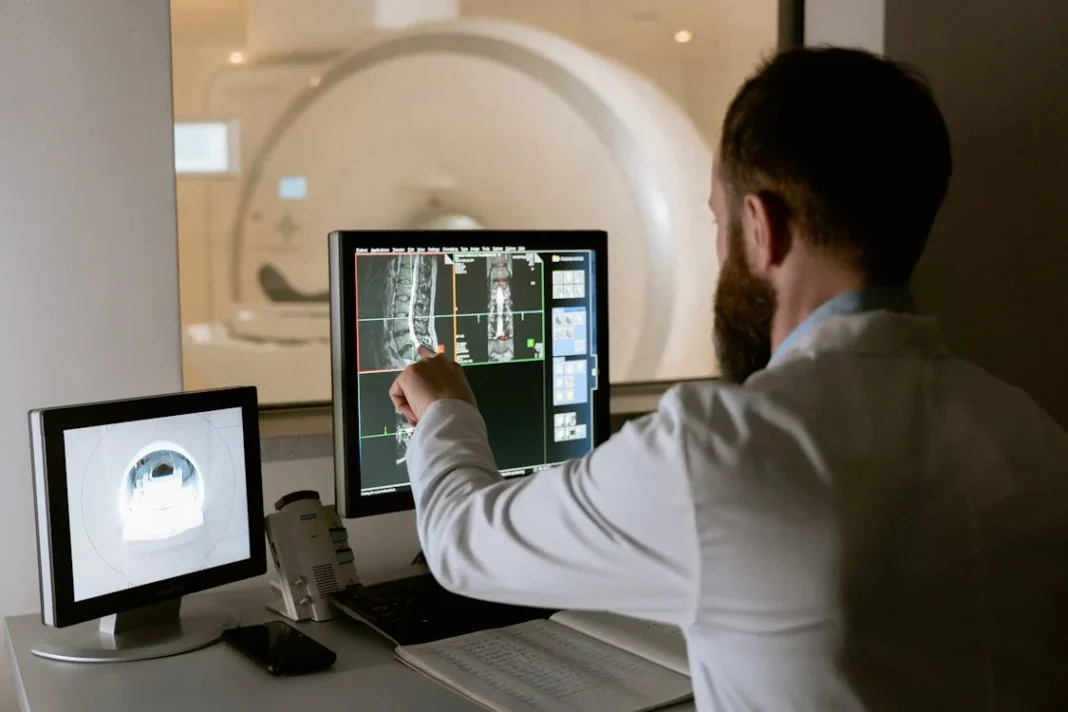A radiographer is a radiology technician. This person finishes the professional training. Now he can do diagnostic imaging examinations. They have imaging techniques and they are X-rays, CT scans, MRI. It also has mammograms and fluoroscopy. Radiology technicians are essential in radiology tech programs. They are making the doctor to as easy diagnose as possible. They produce high-quality images of the inside of the body.
A Radiology Technician has role and responsibilities in radiology tech programs:
1. Preparing Patients:
It is their duty to explain procedures to patients. However, they are at ease and positioned correctly for the imaging examination.
2. Operating Equipment:
These technicians use sophisticated imaging equipment to capture accurate anatomy images.
3. Ensuring Safety:
They stick on to strict safety protocols to minimize radiation exposure to themselves, patients, and others.
4. Assisting Radiologists:
Technicians are the helpers of the radiologists and doctors who specialize in reading diagnostic images. They provide them high-quality images for study and diagnosis.
5. Documenting and Maintaining Records:
They keep the records of procedures, patient information, and imaging results. Thus, they ensure accurate documentation and continuity of care.
Education and Training:
One can be a radiologist by just completing the education of radiology tech program. After their education, it is essential to get certification through the American Registry of Radiologic Technologists or a alike certifying organization.
The Importance of radiology technician in Healthcare:
Radiology technicians have importance in modern healthcare. They make available essential diagnostic information that supports in detecting and treating diseases and injuries. They are expert in operating imaging equipment and producing clear images. It is very important for correct medical diagnoses and effective patient care.
The radiology technicians are skilled professionals in radiology tech programs. They carry out diagnostic imaging procedures with the use of different technologies. They support the medical team by creating clear and exact images. It is helpful for them to diagnose and treat the medical condition of the patient. Therefore, a good and timely treatment is based on reliable diagnostic information.
Radiology tech programs are educational pathways. They are designed to train people to become radiologic technologists. These programs give complete training in medical imaging techniques and procedures. It prepares the students to do diagnostic imaging examinations. Here are serious aspects of radiology programs:
1. Education and Training:
Degree Levels:
These radiology programs can be joined at the associate’s degree level. However, some institutes only offer bachelor’s degrees in radiologic technology. Associate’s degree levels generally have the duration of two years. The bachelor’s degree programs have four years period.
Curriculum:
The program has a curriculum and it contains classroom instruction and clinical training. The Students get the knowledge of X-rays, CT scans, MRI, and fluoroscopy, radiation safety, image evaluation, and patient positioning.
2. Clinical Experience:
Clinical Rotations:
Clinical internships are a significant for radiology tech programs. They are helpful for providing hands-on experience. Students can use classroom knowledge to do imaging procedures on actual patients.
3. Certification and Licensing:
Certification:
Graduates of this technology programs follow official approval through the American Registry of Radiologic Technologists or other institutes like that. These certifications have their requirements and they are completing a program and passing a certification exam.
Licensing:
It is a law in some states for radiologic technologists to have a state license to practice besides certification. Licensing requirements vary by state. This may include passing a state-specific exam. Even they have to meet specific educational and clinical experience criteria.
4. Specializations and Advanced Training:
Specializations:
Technologists have to be a specialize in specific areas of medical imaging after doing a radiology program and gaining experience. They are MRI, CT scanning, mammography, or nuclear medicine.
Continuing Education:
Radiologists often take part in continuing education programs. They also have workshops to maintain certification and keep themselves updated with latest advancements in the field.
5. Career Opportunities
Employment Settings:
Graduates of these tech programs can work in various ways to cure. These persons make them busy by working at hospitals, outpatient clinics, imaging centers, and physician offices.
Job Outlook:
The scope for radiologic technologists is growing day by day. It is also becoming quite demanding.
In the end, radiology tech programs offer education and training in medical imaging techniques. Moreover, they prepare students for careers as radiologic technologists a rewarding one. These programs not only emphasize theoretical knowledge but also practical skills through with clinical experience. So the graduates are well-prepared to meet the healthcare needs of their communities






